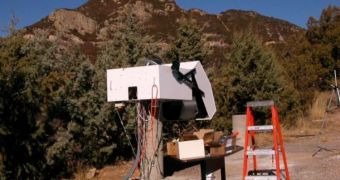Some 700 light-years away from our solar system, researchers identified two exoplanets, orbiting their parent star, and influencing each other in the process. The star, dubbed HAT-P-13, is orbited by the planets HAT-P-13b and HAT-P-13c, each of which exerts a gravitational pull on the other. Now, scientists plan to use one of these bodies to effectively “X-ray” the other, and determine if it has a rocky core, and, if so, just how big it is. The larger, more massive HAT-P-13c will be used as the “mobile laboratory,” as astronomers peer at the inner workings of HAT-P-13b, Wired reports.
“C is allowing us to look inside B. X-raying the planet taps into these esoteric theories that were worked out in the 1930s, but hadn’t been picked up by the extrasolar planet community,” University of California in Santa Cruz (UCSC) astronomer Greg Loughlin says. He is the co-author of a new paper detailing the initiative, which was recently submitted for publication in an upcoming issue of the respected scientific journal Astrophysical Journal Letters.
As the two planets revolve around each other, the expert explains, they warp each others' orbits. By calculating the eccentricities that appear because of this phenomenon, mathematicians can use advanced methods to determine exactly how much of the planet's mass is located at its center. The new effort reflects a growing trend in the international astronomical community, of not looking at planets revolving around other stars as separate entities, but analyzing the star systems as a whole.
This approach revealed some advantages recently, when experts identified the first exomoon. The find is terribly important, because none of the 30 exoplanets thus far discovered that are located in inhabitable zones around their stars is inhabitable. They are all gas giants, but experts say that some of their moons may be ideal candidates for sustaining at least some basic forms of life. Their situation is similar to that encountered right now on Jupiter’s moon Titan or Saturn’s Enceladus.
“To look at and examine many bright stars in the sky, there is a suitable instrument and it’s not necessarily big. There was a black period – the medieval ages of the ’90s – when they used to shut down everything that was a small telescope. They were blinded by the science that big science and big telescopes bring, like detecting a quasar,” Harvard-Smithsonian Center for Astrophysics astronomer Gaspar Bakos says. The new study will be carried out by an array of doghouse-sized telescopes, which can easily fit in the trunk of a car.

 14 DAY TRIAL //
14 DAY TRIAL //